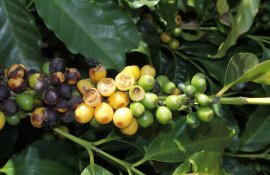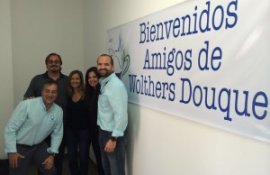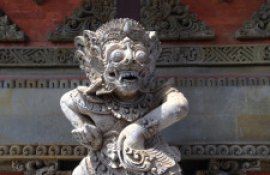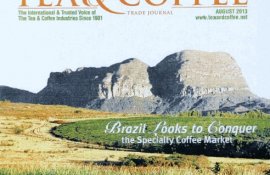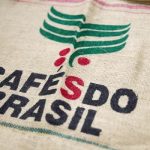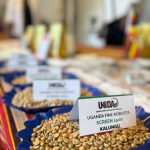Final Episode: Chasing the Roya 2013 “Conclusion”
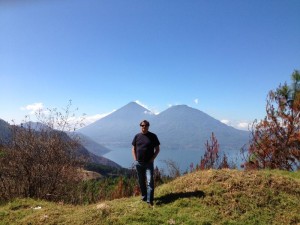 Before driving into the Santa Rosa District, I made a stop at Wolthers Vittrup in Guatemala City for some cup testing of the different Regions, always a privilege to be able to taste great Guatemalan coffees.
Before driving into the Santa Rosa District, I made a stop at Wolthers Vittrup in Guatemala City for some cup testing of the different Regions, always a privilege to be able to taste great Guatemalan coffees.
Then, the final stop at the local Santa Cruz Naranjo Fedecocagua affiliate in the Southern cordillera, the same visited back in January. This visit was far more interesting compared to the first one in January, many more people up in the plantations, lots of positive stories and quite a lot of action has been taken since last May.
Here the Coop affiliated producers have also sprayed three times fighting the Roya; two of the fumigation sessions were paid by Fedecocagua and the third fumigation paid with the producers own money. Many of the independent producers had sprayed while others in the same area had done nothing.
Speaking with these producers I learned that they will never let their coffee production go abandoned, they count with other resources to keep the plantations producing and renewed when necessary. This Region is one of the most productive ones in Guatemala, the average producer has twice as much land than in other parts of the country, now they are even planting new areas while they pruned and sprayed their standing trees.
I left Santa Cruz Naranjo with the certainty that this area will also soon be back in a great condition and maybe better than before the Roya Attack back in 2011/12.
CHASING THE ROYA 2013 “CONCLUSION”
Coffee producers, Fedecocagua, ANACAFE, and I must also include the private coffee exporter sector in Guatemala have done a great job to stop and to correct the negative impact of the Roya.
The effectiveness of the actions taken should serve as an example for the other fungus struck countries in Central and North America. The Fumigation Squad per district, the combination of efficient chemicals and natural organic fluids, the funding and wide radio, TV and printed media campaigns installed by Fedecocagua and ANACAFE have saved the Guatemalan coffee production for now and for the future.
The volume of this current 2013/14 crop cycle and the next one will show a substantial reduction (25 – 35%) due to the eradication, pruning and the lesser number of producers that did not react and care yet. I believe that by the 2015/16 crop cycle, production and quality will be back again, maybe even higher in volume than during these past three years (3.75 million 60kg/ 132.28lb bags).
Lots of additional care has been implemented, anti-insect “Broca Attack” and anti-multi fungus disease impact chemicals have also been included in the reactive campaigns and actions. Many areas with hard infested Roya combined with Nematode route disease have been replanted with stronger and productive varieties. The lesser still untreated plantations are now following the neighboring actions and success, these will soon be sound again; however, it will take them an additional year to return to full production.
Guatemala’s fine coffee tradition, its people, coffee organizations and trade is showing the world the best strategy, decisions, dynamics and actions in how to turn the negative Roya impact around and emerge stronger, sounder, and better!
Christian B. Wolthers
You can check the other episodes here:
Episode 1 | Episode 2 | Episode 3





